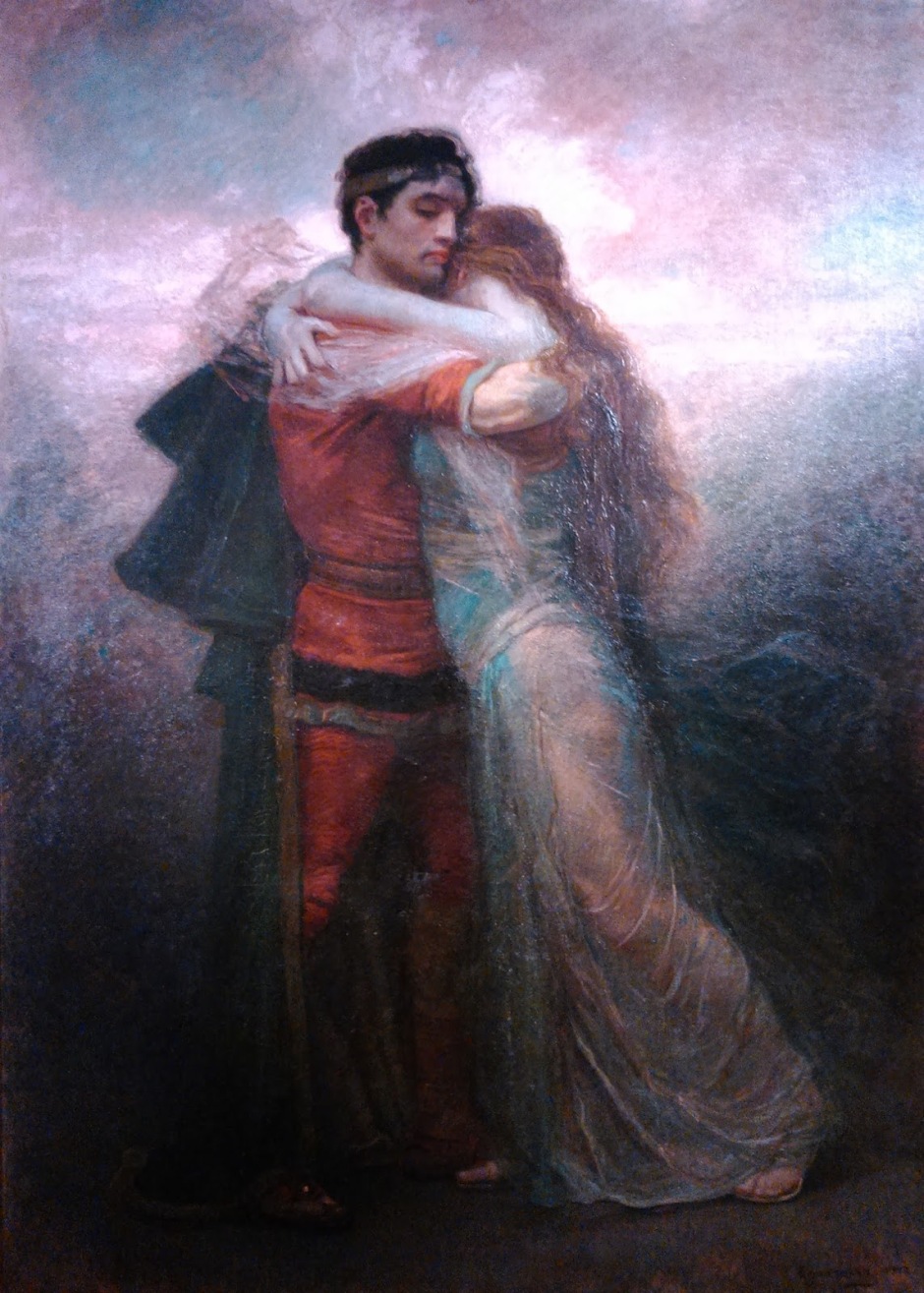After setting up the first of the two love triangles involving King Arthur and his knights, that between the King, Queen Guenevere and Sir Lancelot, Sir Thomas Malory proceeds to the second, to which he returns throughout much of the middle of the book. This involves Sir Tristram (or Tristan), his uncle Mark and La Beale Isode, more generally known as La Belle Iseult or Isolde. This article and the next assemble their story from Malory with the help of other popular versions of the legend.
King Melodias of Lyones married Elizabeth, sister of King Mark of Cornwall. One day when she was expecting their first child and her husband was out hunting, the king was kidnapped and held prisoner. The Queen went to find him, but went into labour in a wood, where she was delivered of her son, then died. After Merlin had freed Melodias, the king returned to his castle and had his son christened Tristram. The young boy later survived an attempt by his stepmother to poison him.
Tristram was brought up in Cornwall, where he became a fine harpist and an expert at hunting and hawking. When he was eighteen, the King of Ireland demanded that his uncle King Mark pay him tributes. After Mark refused, the King of Ireland sent Sir Marhalt to the castle at Tintagel in Cornwall to fight for his tributes.
At that time Tristram hadn’t been knighted, but when he heard of his uncle’s need, he had Mark make him a knight, so that he could fight Marhalt. Their duel took place on an island, where they fought intensely for more than half the day. Both were badly wounded and bleeding profusely, but Marhalt was steadily weakening. Tristram then cut through his opponent’s helmet and his skull with his sword, forcing Marhalt to run back to his ship and return to Ireland in defeat.
Tristram was taken back to Tintagel Castle to recover from his wounds, but after a month there showed no sign of improvement. A learned woman advised them that he needed to travel to the land from where the poison in his wounds had originated, so Tristram was taken to Ireland to recover. He there learned of the death of his opponent Marhalt, fell in love with the King of Ireland’s daughter La Beale Isode, and they exchanged rings.
Later, King Mark and Sir Tristram fell out over their love for another knight’s wife. The king then devised a way to destroy Tristram, by sending him to Ireland to bring La Beale Isode back for Mark to marry. The Queen of Ireland sent Tristram back with her daughter and her lady-in-waiting. As they were sailing back to Cornwall, Tristram and Isode drank together from a golden flask containing a potion that ensured their love for one another would never end, setting up the love triangle.

Isolda with the Love Potion (1870) is one of Frederick Sandys’ late Pre-Raphaelite or Aesthetic paintings, and shows as femme fatale Isolde of the legend and Wagner’s opera Tristan and Isolde. The opera had only received its première five years earlier, although its next production didn’t occur until 1874. In the operatic version, the couple drink what they believe is a poisonous potion, which instead of killing them both, makes them fall in relentless love with one another. Sandys shows only Isolde, the cup of poison in her right hand, looking into the distance. The floral language, red roses in particular, is symbolic of love.

Herbert James Draper’s Tristan and Isolde from 1901 shows the couple on the deck of the ship as they return to Cornwall. The golden goblet is empty as he looks in desperation into her half-closed eyes. Behind them the crew are rowing through the choppy waters.

John Duncan’s ornate tempera painting of Tristan and Isolde from 1912 shows them holding a crystal glass in their hands, staring into one another’s eyes just before they drink.

In the first of his pair of paintings of the couple from 1912, Rogelio de Egusquiza shows them embracing, without any reference to the potion or their journey to Cornwall.

Koloman Moser’s Tristan and Isolde from about 1915 shows Isolde persuading Tristan to drink the love potion, as his sword rests at their feet.

In his painting of the couple from 1916, John William Waterhouse gives a faithful pictorial account of them drinking the potion from a golden chalice, while on the ship carrying them back to King Mark.
I’ll take this story to its tragic conclusion in the next article.
Reference
Dorsey Armstrong (translator and editor) & Sir Thomas Malory (2009) Morte Darthur, a new modern English translation, Parlor Press. ISBN 978 1 60235 103 5. (A superb translation based on the Winchester manuscript.)

